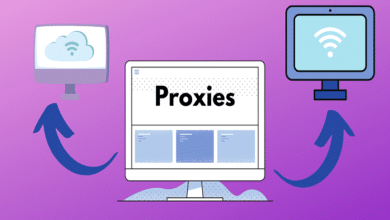SSIS-816: Demystifying the ETL Powerhouse for Modern Data Integration

In the ever-evolving landscape of data management, SSIS-816 stands as a stalwart solution for efficiently extracting, transforming, and loading (ETL) data. For businesses grappling with diverse data sources and complex integration needs, understanding the capabilities of SSIS-816 can be transformative. Let’s delve into the world of SSIS-816, exploring its features, benefits, and potential applications.
SSIS-816: What is it?
SSIS-816, formally known as SQL Server Integration Services 816, is a powerful component of the Microsoft SQL Server platform. It empowers users to design and automate data integration workflows, seamlessly connecting various data sources and destinations. This robust tool simplifies complex data migration, transformation, and cleansing processes, ensuring data accuracy and availability across diverse systems.
Beyond the Basics: Key Features of SSIS-816
SSIS-816 boasts a plethora of features that cater to diverse data integration needs. Here are some highlights:
Intuitive Visual Development: The user-friendly drag-and-drop interface simplifies workflow creation, even for users with limited coding experience.
Extensive Connectivity: Connect to various data sources, including databases, flat files, web services, and more, ensuring effortless data retrieval.
Comprehensive Transformations: Leverage a rich set of built-in and custom transformations to cleanse, manipulate, and format data according to your needs.
Scheduling and Automation: Schedule your ETL workflows to run automatically, ensuring timely data updates and streamlining data management processes.
Error Handling and Logging: Robust error handling and detailed logging capabilities enable troubleshooting and ensure data integrity throughout the integration process.
The Power of Efficiency: Benefits of Using SSIS-816
Enhanced Data Accuracy: Automated data workflows minimize manual errors and ensure consistent data quality.
Improved Operational Efficiency: Streamlined data integration processes free up IT resources for other critical tasks.
Greater Flexibility: Adapt to changing data needs and sources with ease thanks to the versatile feature set.
Cost-Effectiveness: Leverage existing Microsoft infrastructure and avoid expensive third-party solutions.
Simplified Decision-Making: Access consolidated and accurate data for informed decision-making across your organization.
Where SSIS-816 Shines: Real-World Applications
- Data warehousing: Integrate data from multiple sources into your data warehouse for centralized analysis.
- Reporting and analytics: Ensure up-to-date data feeds for accurate reporting and business insights.
- Application integration: Connect enterprise applications and automate data exchange seamlessly.
- Data migration: Migrate data efficiently between different systems with minimal downtime.
- Master data management: Maintain data consistency and accuracy across various systems.
Beyond the Hype: Considerations for Using SSIS-816
While SSIS-816 offers robust capabilities, it’s essential to consider its limitations before implementation:
- Limited scalability for extremely high-volume data processing.
- Requires Microsoft infrastructure and expertise.
- May not be the optimal solution for complex transformations requiring custom coding.
Conclusion
SSIS-816 provides a robust and user-friendly platform for automating and streamlining your data integration processes. Its efficiency, flexibility, and cost-effectiveness make it a valuable tool for businesses of all sizes. However, carefully evaluating your specific needs and limitations is crucial before making a decision.
FAQ
- Q: Is SSIS-816 the only data integration solution available?
A: No, numerous data integration solutions exist, each with its own strengths and weaknesses. Evaluating your specific needs, budget, and technical expertise is crucial before selecting the right tool.
- Q: What are the alternatives to SSIS-816?
A: Popular alternatives include Informatica PowerCenter, Talend Open Studio, and Azure Data Factory. Each offers distinct features and pricing models, catering to diverse requirements.
- Q: Do I need advanced coding skills to use SSIS-816?
A: The user-friendly interface makes SSIS-816 accessible for users with limited coding experience. However, more complex transformations might require some coding knowledge.
- Q: Where can I learn more about SSIS-816?
A: Microsoft offers extensive documentation and tutorials, alongside online communities and training resources. Consider seeking guidance from data integration experts for tailored advice.
- Q: How can I get started with SSIS-816?
A: Explore Microsoft’s learning resources, experiment with the free SSIS Express edition, and consider attending workshops or consulting data integration specialists for further support.



